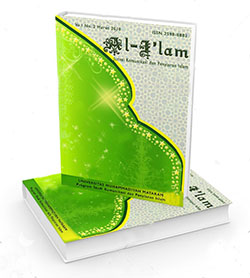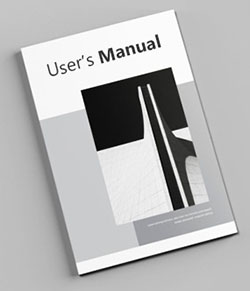Struktur Narasi Berbagi Kepada Sesama Dalam Semiotika TV Commercial (TVC) Lazismu | Semiotics of Narrative Structure Sharing with Others in the Commercial TV (TVC) Lazismu
Abstract
Abstrak:
Studi ini bertujuan menginterpretasi simbol-simbol dalam bangunan struktur narasi empat seri TV commercial Lembaga Amil Zakat Infaq dan Shadaqah Muhammadiyah (Lazismu). Menggunakan pendekatan kualitatif deskriptif dengan berdasarkan pada teori semiotika naratif A.J. Greimas sebagai alat analisis. Studi memfokuskan pada empat cerita dengan aktan yang berbeda berdasarkan model fungsional yang terdiri dari beberapa tahap, yakni situasi awal, tahap transformasi, dan situasi akhir; juga pada model aktansial yang terdiri dari subjek, objek, sender, receiver, helper, opposant. Studi menyimpulkan masing-masing seri cerita memiliki aktan yang berbeda secara teknis tapi memiliki kesamaan secara substantif dengan porsi yang seimbang antara situasi awal, tahap transformasi, dan situasi final. Berbagi kepada sesama divisualisaskan berfokus pada konflik batin subject, bukan kepada receiver yang menerima bantuan. Situasi awal dibangun dengan tanda kesenjangan antara subject dengan opposant, artinya tidak harus menunggu kaya terlebih dahulu, melainkan atas apa yang dimiliki saat ini. Sedangkan object berbagi kepada sesama digambarkan tidak hanya tentang uang/harta, melainkan pula bisa dalam bentuk tenaga, pikiran, waktu dan pengorbanan pada hal-hal yang ingin dimiliki guna memberikan kebahagiaan bahkan tidak hanya untuk receiver melainkan pula untuk subject itu sendiri.
Abstract:
This study aims to interpret the symbols in the narrative structure of the four commercial TV series Lembaga Amil Zakat Infaq and Shadaqah Muhammadiyah (Lazismu). Using a descriptive qualitative approach based on the narrative semiotic theory of A.J. Greimas as an analysis tool. The study focuses on four stories with different actors based on a functional model consisting of several stages, namely the initial situation, the transformation stage, and the final situation; also in the actual model, which consists of subject, object, sender, receiver, helper, opposant. The study concludes that each series of stories has different actors technically but substantively in common with equal portions between the initial situation, the transformation stage, and the final situation. Sharing with others is visualize focusing on the inner conflicts of the subject, not on the receiver receiving help. The initial situation is build with a sign of a gap between the subject and the opposant, meaning that we have not to wait for the rich first, but for what we have today. While the object of sharing with others is, describe not only about money/property, but also in the form of energy, thoughts, time and sacrifice for things that you want to have in order to give happiness not only for the receiver but also for the subject itself.
Keywords
Full Text:
PDF (Bahasa Indonesia)DOI: https://doi.org/10.31764/jail.v4i2.4320
Refbacks
Copyright (c) 2021 Al-I'lam: Jurnal Komunikasi dan Penyiaran Islam

This work is licensed under a Creative Commons Attribution-ShareAlike 4.0 International License.
Al-I’lam: Jurnal Komunikasi dan Penyiaran Islam
Fakultas Agama Islam Universitas Muhammadiyah Mataram.
Alamat Redaksi:
Jln. KH. Ahmad Dahlan No. 1 Pagesangan – Mataram
Telpon 085946008096 | email: [email protected]
INDEXED BY:

.png)
2.png)


























